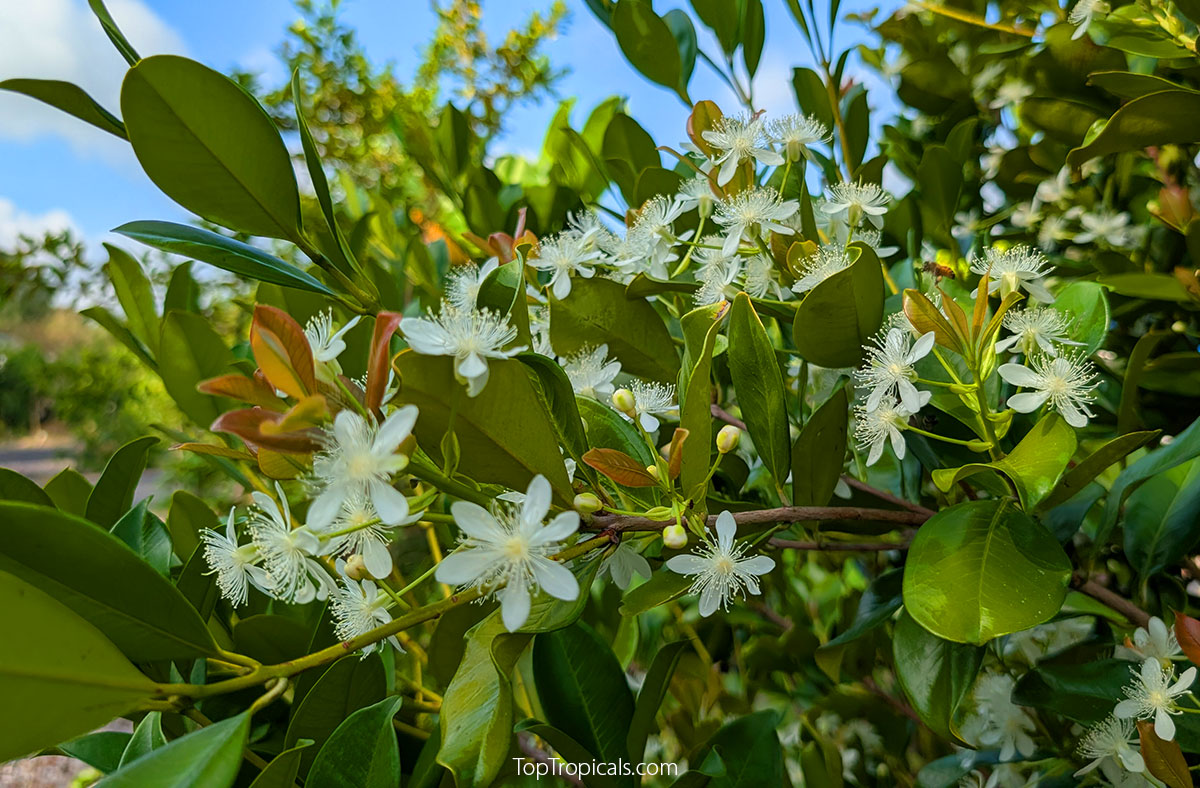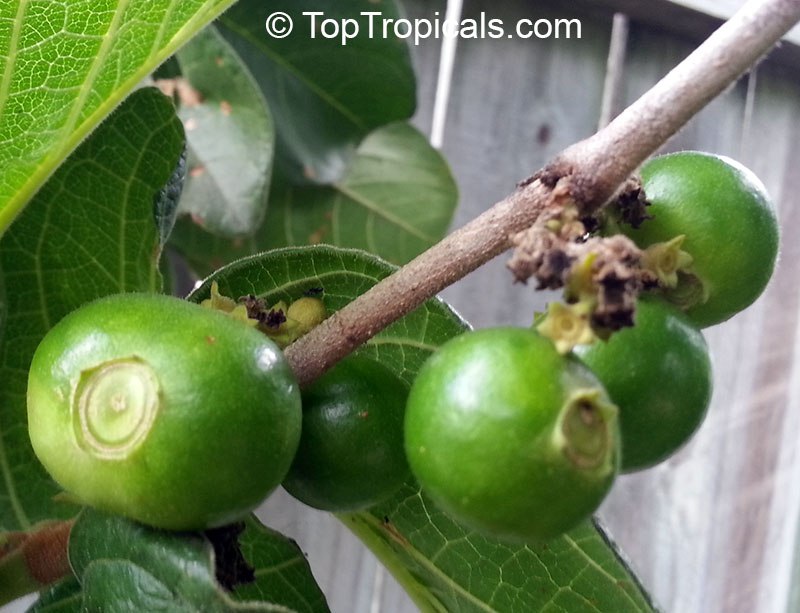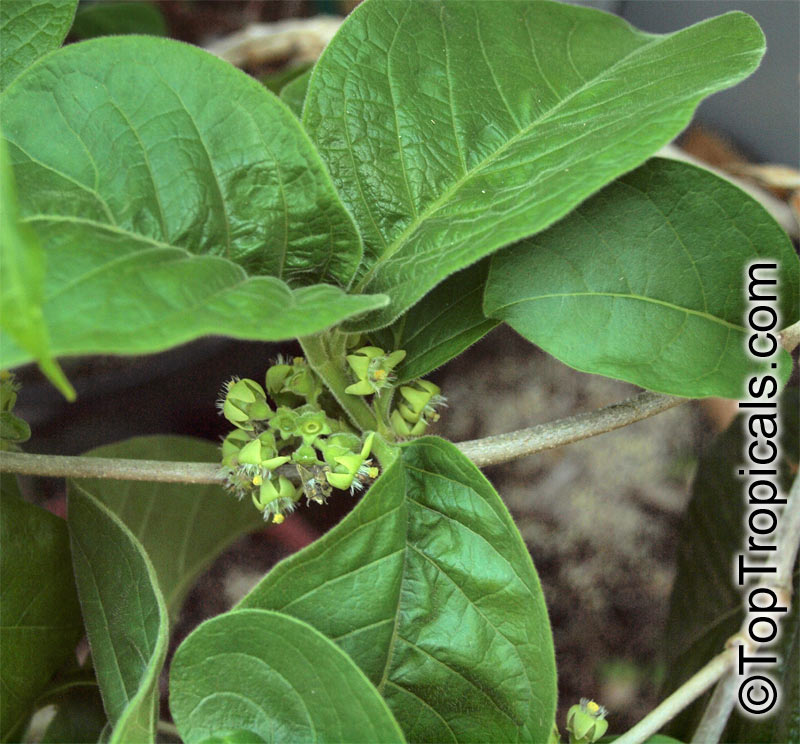Garden Blog - Top Tropicals
Date:
🌞 How to help your plants survive a hot summer
Q: It's getting so hot that my plants stay droopy all day, how much water is enough water? Any advice how to help them to survive this heat?
A: Yes, it's official - summer has cranked up the heat, and your garden knows it. Blame it on the dreaded heat dome - a big ol' pressure lid in the sky that traps hot air like a pressure cooker. Basically, it's summer's version of putting your plants in an oven - without the cookies... But don't panic! With a little extra care (and water), you can help your leafy friends make it through the sizzle without going crispy. Here's how to beat the heat in your garden:
Eight rules during summer heat
1. Water early, and generously. Morning is the magic hour. Before the sun gets too intense, give your plants a slow, deep drink - like a spa treatment before a big day. Watering in the middle of the day? Bad idea. It's like pouring water on a hot frying pan - evaporates fast, and can even scorch leaves.
2. Mulch like you mean it. A nice 2-3 inch blanket of mulch keeps your plants' roots cool and the moisture locked in. Think of it as sunscreen and air conditioning for the soil. Pine straw, bark chips, shredded leaves - whatever you've got, pile it on.
3. Give them some shade. If your plants are looking like they're sunbathing without sunscreen, help them out. Use old sheets, umbrellas, shade cloth - whatever works. Even a light shade can make a big difference. New plants, veggies, and shade lovers like philodendrons will thank you.
4. Put down the pruners. Right now, your plants are in survival mode. Pruning in extreme heat can stress them out more. Let them ride out the heat wave before giving them a trim.
5. Don't move in this heat. If you're thinking of transplanting that poor little tree - hold that shovel. Moving plants during extreme heat is like moving house during a heatwave - everyone ends up grumpy. Wait until cooler weather rolls back in.
6. Pamper your potted plants. Pots heat up fast and dry out even faster. Move your container plants to shadier spots and check their soil often - don't let it go bone dry. They can't dig deeper for water, so you're their lifeline.
7. Know the signs of heat stress:
- Droopy in the day, perky at night? Normal. They're just hot, not dying.
Keep watching.
- Crispy edges or curling leaves? They're too dry. Deep water, mulch,
shade.
- Still wilted the next morning? That's a red flag. Time to step up the TLC
- soak thoroughly and shield from the sun.
8. Don't forget about yourself! If your plants are feeling the heat, you probably are too. So wear a hat, slap on sunscreen, hydrate, and do your gardening early or late in the day.
Need help planning your garden's heatwave strategy? We're here for you, 7 days a week. Reach out to the Top Tropicals team and we'll get your plants through summer with style!
Stay cool and grow on,
Kristi V. - your Tropical Plant Expert 🌴
Date:
🍒 New video: Grumichama
The sweetest tropical cherry for your yard
If you're looking for a fruit tree that does it all - gorgeous looks, amazing flavor, and nonstop production - meet Grumichama - Eugenia brasiliensis, the tropical cherry you'll fall in love with! The cherries are glossy, deep purple-black, and unbelievably juicy. One bite and you're hooked - sweet, smooth, with hints of cherry, grape, and plum.
Grumichama is our favorite tropical cherry at Top Tropicals. So good, you'll eat one… then a handful… then half the tree! Grumichama is perfect for beginners - tough, forgiving, and super productive. Cold hardy to the upper 20s. It takes heat, partial shade, even salt spray. It thrives in a pot or in the ground and can produce up to 500 fruits per tree!
Start your food forest with Grumichama. It's easy. It's beautiful. The most addictive fruit!
Subscribe to our Channel:
Stay updated with TopTropicals Videos by subscribing to our channel at YouTube.com/TopTropicals and get our latest video news of what is fruiting and blooming!
Halfway around the world
Georgie is traveling the World Map at PeopleCats.Garden
"A lie can travel halfway around the world while the truth is putting on its shoes." - Mark Twain
🐈📸 Georgie is traveling the World
#PeopleCats #Quotes
🟢 Join 👉 TopTropicals
The wild fruit with a secret: health benefits of rare Spanish Tamarind - the exotic fruit youve never heard of
Looking for a new exotic fruit to love? Meet Vangueria infausta - Spanish Tamarind, also called Wild Medlar. Native to Southern Africa, this little-known gem grows on a small tree and produces round, golden-brown fruit with a sweet-tart flavor. You can eat them fresh, dried, or even turn them into a tropical jam or homemade fruit beer!
But it's not just tasty - it's super healthy. The fruit is packed with vitamin C, fiber, and minerals like iron and magnesium. Locals use it as natural medicine: the leaves and bark are brewed into teas for colds, fevers, and stomachaches. The roots are even used for coughs and snakebites.
Secret bonus? Its bark and leaves make natural dyes in yellow, green, and purple!
The Wild Medlar is easy to grow in warm climates (Zones 9-11) and can handle poor soil and dry weather. In cooler zones, just grow it in a pot and bring it in for winter. Give it full sun, some water, and it'll reward you with 20-40 fruits per season.
🛒 Grow your own wild superfruit - Spanish Tamarind
#Food_Forest #Remedies #Discover
🟢 Join 👉 TopTropicals
The wild fruit with a secret: health benefits of rare Spanish Tamarind - the exotic fruit youve never heard of
Looking for a new exotic fruit to love? Meet Vangueria infausta - Spanish Tamarind, also called Wild Medlar. Native to Southern Africa, this little-known gem grows on a small tree and produces round, golden-brown fruit with a sweet-tart flavor. You can eat them fresh, dried, or even turn them into a tropical jam or homemade fruit beer!
But it's not just tasty - it's super healthy. The fruit is packed with vitamin C, fiber, and minerals like iron and magnesium. Locals use it as natural medicine: the leaves and bark are brewed into teas for colds, fevers, and stomachaches. The roots are even used for coughs and snakebites.
Secret bonus? Its bark and leaves make natural dyes in yellow, green, and purple!
The Wild Medlar is easy to grow in warm climates (Zones 9-11) and can handle poor soil and dry weather. In cooler zones, just grow it in a pot and bring it in for winter. Give it full sun, some water, and it'll reward you with 20-40 fruits per season.
🛒 Grow your own wild superfruit - Spanish Tamarind
#Food_Forest #Remedies #Discover
🟢 Join 👉 TopTropicals








